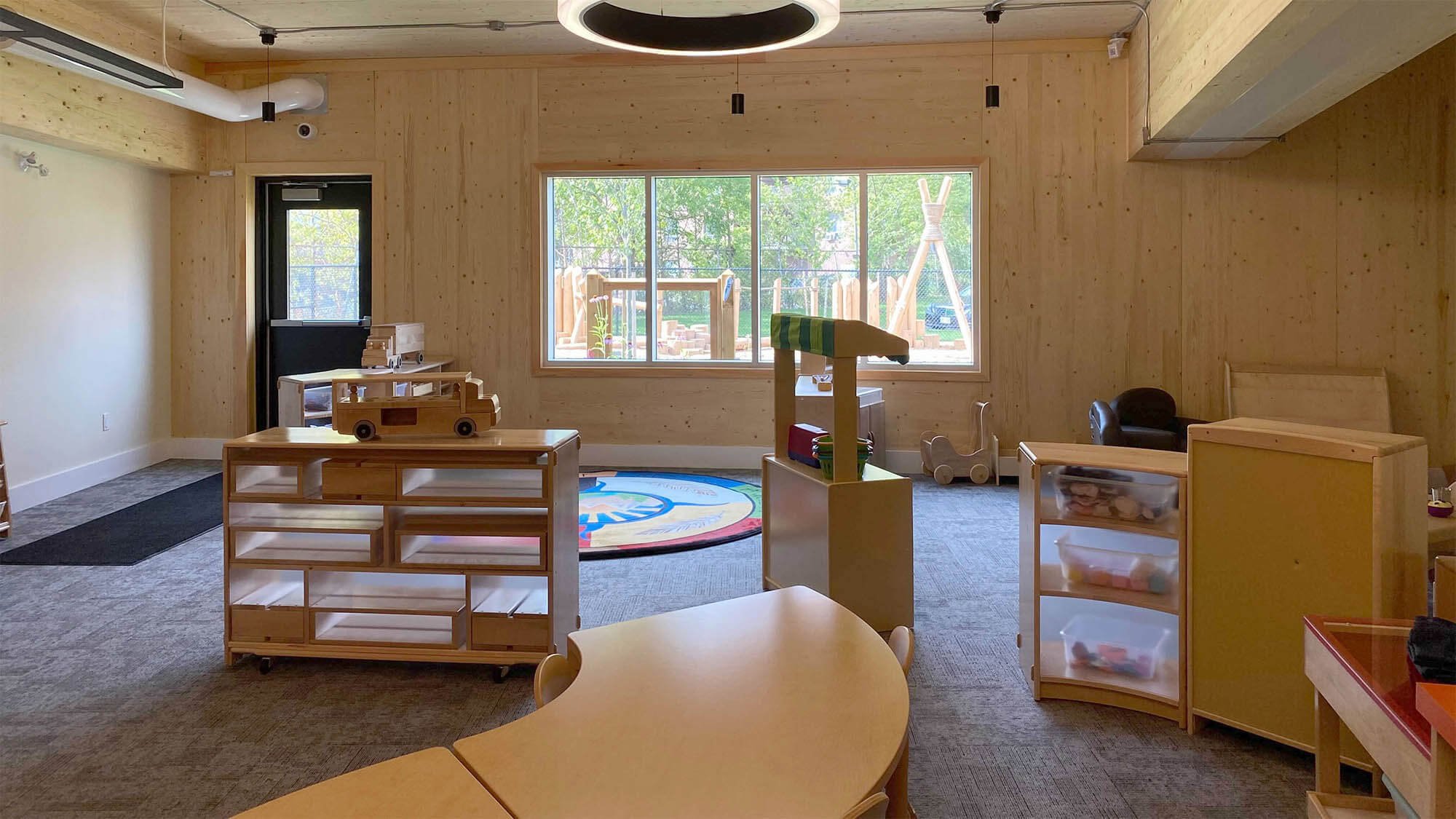
Our Centre
Nshwaasnangong is a joyful place to honour and express our diverse identities as Indigenous peoples. Come visit us at 449 Hill Street, in London’s SoHo neighbourhood.
About Our Site
The Journey Together Committee, working with the City of London, identified what was important in a site for a new child care and family centre, which included being close to the river, having lots of space for land-based learning, and being close to where Indigenous people live in London.
The City then purchased an old school site at 449 Hill St, in the SOHO neighbourhood, which is close to the river, as well as AtLohsa, N’Amerind and the SOAHAC London site. A ceremony, led by Pam Plain, was performed prior to the demolition of the school, and the land was transferred to SOAHAC for the centre.
A feminine form to hold and protect Indigenous children and their caregivers.
The centre was initially conceived as a feminine form to hold and protect Indigenous children and their caregivers. Upon entering the Centre, children, caregivers, staff and visitors will feel important as individuals but also an essential part of a bigger whole. These aspirations led to an oval-shaped floor plan and a tiered curved roof, that is lower in spaces where the children are the most, making it feel close and protective.
Once the overall shape was set, the priority was to flood the central interior spaces with daylight and a ring of windows near the ceiling was introduced into the design. This means sunbeams will shine through and change their position as the sun travels across the sky each day. The change of seasons and time of day will help children understand the cyclical nature of the Indigenous world view.
Fun was also very important! As much as possible, wood beams are exposed so children can see and understand how Nshwaasnangong is put together, much like the interior of a traditional longhouse, wigwam or bighouse. The structure was also built as low as practical to feel “kid-sized”.
The design has been likened to many animal forms, including the Turtle, the Beetle, the Whale, and the Butterfly, the feeling of which will enliven the children’s day.
Many of the program rooms have direct access to the outdoors and adjacent playground areas that use natural materials to create innovative play structures. Lastly, the grounds will be a garden of biodiversity as Indigenous plants are grown and rain is collected for their nurturing.







